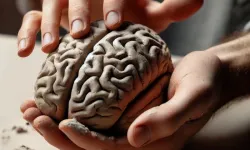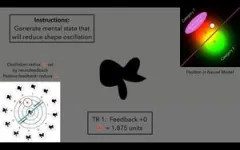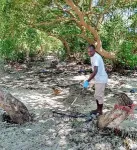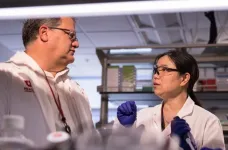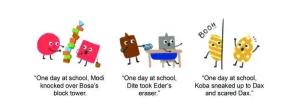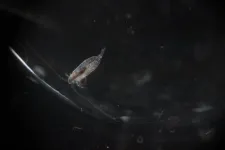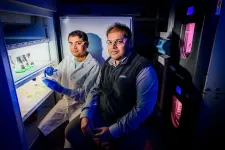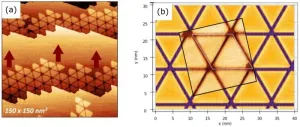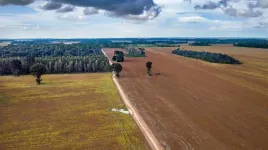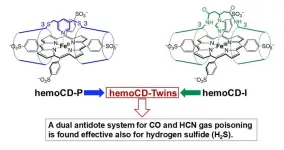(Press-News.org) Imagine being able to inscribe a new pattern of activity into a person’s brain that would allow for faster learning, or better treatment of psychiatric and developmental disorders such as depression or autism. Now imagine being able to do that in a way that doesn’t require brain surgery or any physical manipulation. Sounds like science fiction?
It still is. But that’s exactly what Coraline Iordan, an assistant professor of brain and cognitive sciences and of neuroscience at the University of Rochester has been working toward, showing for the first time that it can certainly be done for learning new visual categories of objects.
Generally, learning happens when our brain changes through experience, study, or instruction. But Iordan and colleagues at Yale and Princeton successfully tested a novel approach for teaching the human brain to learn through external manipulation and neural feedback—what they call the “sculpting” of brain activity patterns. The research appears in the Proceedings of the National Academy of Sciences.
“With our method not only can we nudge complex patterns around in the brain toward known ones, but also—for the first time—write directly a new pattern into the brain and measure what effect that has on a person’s behavior,” says lead author Iordan.
Brain sculpting—a new approach to learning?
The scientists used real-time neuroimaging and second-by-second neurofeedback to modify how the brain represents and processes information about visual objects. Lying inside a functional magnetic resonance imaging (fMRI) machine, study participants viewed objects projected onto a mirror above their heads, which looked like a small screen. The object—an abstract shape that some participants described as a petal, plant bulb, or butterfly—pulsed gently on the participants’ mirror until they managed to “move it” by their own thought processes to the pattern of activity in their brain (monitored via fMRI in real time) that the scientists had previously chosen. The researchers instructed the participants to “generate a mental state” that would reduce the shape’s oscillation but had not taught the study participants how to achieve such mental state.
“One of the striking features of the study is that the neural responses and corresponding behavior to the new categories occurred without explicit awareness of those categories, showing that a long tradition of work in psychology on implicit processing—that is, the ability to respond to information meaningfully outside of awareness—also extends to the learning and formation of new neural representations,” says coauthor Jonathan Cohen, a cognitive neuroscientist at Princeton University.
The immediate feedback given to the study participants here meant that the image stopped wobbling on their mirror once they successfully managed to represent the visual object more similarly to a brain activity pattern that the researchers had previously designated, instead of how the object would have been represented in their brains naturally. In other words, the scientists had developed a method that caused people to learn new categories of visual objects, not by teaching them what the categories were, but by changing how their brains worked when they looked at the individual objects in those categories.
“Instead of teaching you something and measuring how your brain changes, we wrote a new category into your brain that would have appeared had you learned it yourself,” explains Iordan. “Then we tested whether you saw the new category that we had inserted. Turns out you did.”
To ensure study participants were highly motivated to succeed, they were rewarded monetarily if they managed to stop the image wobble, which over six daily sessions could amount to a sizeable bonus.
Future applications
Scientists are working to better understand what exactly happens to brain function in people with a variety of neuropsychiatric, developmental, or psychological disorders, such as major depression, visual agnosias (the inability to recognize everyday items), and autism. According to Iordan, a method like theirs may eventually play a role in clinical treatment by modifying the brain patterns of patients to make theirs look more similar to the brain patterns found in the neurotypical population, which down the road could lead to new approaches for treatment, either by itself or in conjunction with already existing therapies.
“This study is one of the most powerful demonstrations yet of brain training with real-time fMRI. Dr. Iordan used neurofeedback to help humans create a category in their mind that then influenced their behavior,” says coauthor Nicholas Turk-Browne, a psychologist at Yale University. “In the future, this discovery could inform the development of brain-computer interfaces and clinical interventions.”
At its core lies the scientists’ ability to access the brain in a way that hasn’t been done before.
“We essentially turned learning on its head and taught your brain something that caused you to vicariously gain information, even though you were never explicitly given that information,” says Iordan. “That tells us we have access to the building blocks of learning in the brain in a way that we haven’t had before—for learning things that are much more complicated, such as entire categories of items, complex visual things, or potentially even beyond that someday.”
The study was supported by funding from the John Templeton Foundation, Intel Corporation, and the National Institutes of Health.
END
Sculpting the brain (without chisel or scalpel)
Scientists have developed a novel approach to human learning through noninvasive manipulation of brain activity patterns.
2024-12-10
ELSE PRESS RELEASES FROM THIS DATE:
Wrong trees in the wrong place can make cities hotter at night, study reveals
2024-12-10
University of Cambridge media release
Wrong trees in the wrong place can make cities hotter at night, study reveals
UNDER STRICT EMBARGO UNTIL 10:00 AM UK TIME / 05:00 AM (US ET) ON TUESDAY 10TH DECEMBER 2024
While trees can cool some cities significantly during the day, new research shows that tree canopies can also trap heat and raise temperatures at night. The study aims to help urban planners choose the best combinations of trees and planting locations to combat ...
New gene therapy reverses heart failure in large animal model
2024-12-10
A new gene therapy can reverse the effects of heart failure and restore heart function in a large animal model. The therapy increases the amount of blood the heart can pump and dramatically improves survival, in what a paper describing the results calls “an unprecedented recovery of cardiac function.”
Currently, heart failure is irreversible. In the absence of a heart transplant, most medical treatments aim to reduce the stress on the heart and slow the progression of the often-deadly disease. But if the gene therapy shows similar ...
Young children less likely than adults to see discrimination as harmful
2024-12-10
A White House report earlier this year outlined how discrimination, and specifically racial discrimination, persists in the United States today, raising questions about when attitudes underlying these behaviors are formed.
Past scholarship has found discriminatory views increase as children grow older. However, new work by a team of New York University psychology researchers shows that young children in the US are less likely than adults to see discrimination as harmful, indicating these beliefs begin at an early age. Moreover, children ...
Tiny poops in the ocean may help solve the carbon problem
2024-12-10
A Dartmouth-led study proposes a new method for recruiting trillions of microscopic sea creatures called zooplankton in the fight against climate change by converting carbon into food the animals would eat, digest, and send deep into the ocean as carbon-filled feces.
The technique harnesses the animals' ravenous appetites to essentially accelerate the ocean's natural cycle for removing carbon from the atmosphere, which is known as the biological pump, according to the paper in Nature Scientific Reports.
It begins ...
Study offers insight into chloroplast evolution
2024-12-10
CHAMPAIGN, Ill. — One of the most momentous events in the history of life involved endosymbiosis — a process by which one organism engulfed another and, instead of ingesting it, incorporated its DNA and functions into itself. Scientific consensus is that this happened twice over the course of evolution, resulting in the energy-generating organelles known as mitochondria and, much later, their photosynthetic counterparts, the plastids.
A new study published in the journal Nature Communications explores the origin of chloroplasts, the plastids that allow plants ...
Advancing the synthesis of two-dimensional gold monolayers
2024-12-10
Nanostructured two-dimensional gold monolayers offer possibilities in catalysis, electronics, and nanotechnology.
Researchers have created nearly freestanding nanostructured two-dimensional (2D) gold monolayers, an impressive feat of nanomaterial engineering that could open up new avenues in catalysis, electronics, and energy conversion.
Gold is an inert metal which typically forms a solid three-dimensional (3D) structure. However, in its 2D form, it can unlock extraordinary properties, such as unique electronic behaviors, enhanced surface reactivity, and immense potential for revolutionary applications in catalysis ...
Human disruption is driving ‘winner’ and ‘loser’ tree species shifts across Brazilian forests
2024-12-10
Fast-growing and small-seeded tree species are dominating Brazilian forests in regions with high levels of deforestation and degradation, a new study shows.
This has potential implications for the ecosystem services these forests provide, including the ability of these ‘disturbed’ forests to absorb and store carbon. This is because these “winning” species grow fast but die young, as their stems and branches are far less dense than the slow growing tree species they replace.
Wildlife species adapted to consuming and dispersing the large seeds of tree species that ...
A novel heme-model compound that treats lethal gas poisoning
2024-12-10
You may not be familiar with hydrogen sulfide, a colorless gas that smells like rotten eggs, and is produced naturally from decaying matter. However, this gas is lethal to breathe in, and hydrogen sulfide present in high concentrations can cause death very rapidly. Its relative density is also greater than air, causing it to accumulate at lower altitudes and posing an enormous threat to workers at sites, such as manholes, sewage systems and mining operations.
Why is hydrogen sulfide so dangerous? It binds strongly to the heme-containing cytochrome c oxidase ...
Shape-changing device helps visually impaired people perform location task as well as sighted people - EMBARGO: Tuesday 10 December (10:00 UK time)
2024-12-10
IMPERIAL COLLEGE LONDON PRESS RELEASE
Under STRICT EMBARGO until:
10 December 2024
10:00 UK TIME / 05:00 ET
Peer-reviewed / Observational study / People
Trial shows no significant difference in performance between visually impaired participants using new device and sighted participants using only natural vision.
Participants performed significantly better using new device than with currently available vibration technology.
The new device is believed to be the most advanced navigation tech of ...
AI predicts that most of the world will see temperatures rise to 3°C much faster than previously expected
2024-12-10
Three leading climate scientists have combined insights from 10 global climate models and, with the help of artificial intelligence (AI), conclude that regional warming thresholds are likely to be reached faster than previously estimated.
The study, published in Environmental Research Letters by IOP Publishing, projects that most land regions as defined by the Intergovernmental Panel on Climate Change (IPCC) will likely surpass the critical 1.5°C threshold by 2040 or earlier. Similarly, several regions are on track to exceed the 3.0°C threshold ...
LAST 30 PRESS RELEASES:
An ECOG-ACRIN imaging study solves a long-standing gap in metastatic breast cancer research and care: accurately measuring treatment response in patients with bone metastases
Cleveland Clinic presents final results of phase 1 clinical trial of preventive breast cancer vaccine study
Nationally renowned anesthesiology physician-scientist and clinical operations leader David Mintz, MD, PhD, named Chair of the Department of Anesthesiology at the UM School of Medicine
Clean water access improves child health in Mozambique, study shows
Study implicates enzyme in neurodegenerative conditions
Tufts professor named Fellow of the National Academy of Inventors
Tiny new device could enable giant future quantum computers
Tracing a path through photosynthesis to food security
First patient in Arizona treated with new immune-cell therapy at HonorHealth Research Institute
Studies investigate how AI can aid clinicians in analyzing medical images
Researchers pitch strategies to identify potential fraudulent participants in online qualitative research
Sweeping study shows similar genetic factors underlie multiple psychiatric disorders
How extreme weather events affect agricultural trade between US states
Smallholder farms maintain strong pollinator diversity – even when far from forests
Price of a bot army revealed across hundreds of online platforms worldwide – from TikTok to Amazon
Warblers borrow color-related genes from evolutionary neighbors, study finds
Heat signaling from plants is an ancient pollinator signal
New index reveals the economics underlying the online manipulation economy
High-resolution satellite observations reveal facility-level methane emissions worldwide
Researchers discover how Ebola and Marburg disrupt the gastrointestinal tract
Feeling the heat
Eastward earthquake rupture progression along the Main Marmara Fault towards Istanbul
Scientists uncover how Earth’s mantle locked away vast water in early magma ocean
Scientists uncover key driver of treatment-resistant cancer
Rare image of Tatooine-like planet is closest to its twin stars yet
Music: Popular song lyrics have become more negative since 1973
Marine ecology: Killer whales tail dolphins to hunt salmon
ADHD prescriptions on the rise, study finds
How to build a genome
Sharp rise in ADHD stimulant prescriptions in Ontario, research finds
[Press-News.org] Sculpting the brain (without chisel or scalpel)Scientists have developed a novel approach to human learning through noninvasive manipulation of brain activity patterns.
